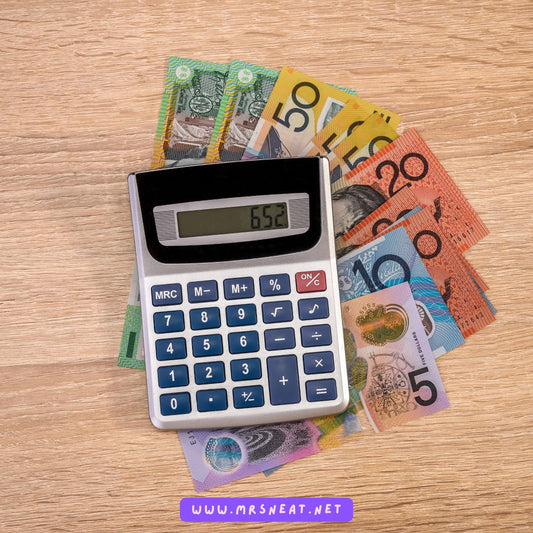
Building an Emergency Fund : Your Safety Net to Financial Freedom
maris wariShare
Building an emergency fund is crucial for financial security and can serve as a safety net during unexpected situations.

By following these steps, you can start building your emergency fund and pave the way to financial freedom:
Set a Specific Goal #1
In the journey towards financial freedom, one crucial aspect that cannot be overlooked is building an emergency fund.
An emergency fund serves as a safety net to help you navigate unexpected situations without disrupting your financial stability.
By understanding how to calculate the appropriate amount for your emergency fund, you can establish a solid foundation for financial security and ultimately achieve your desired freedom.
Determine how much you want to save in your emergency fund. A general starting point is to aim for three to six months' worth of living expenses.
Calculate your necessary expenses, including rent/mortgage, utilities, groceries, insurance, and debt payments, then multiply that figure by the number of months you want to save for.
Here's step by step guide:
Step 1: Assess Your Monthly Expenses
To determine the size of your emergency fund, start by evaluating your monthly expenses.
Calculate the costs of essential items such as rent/mortgage payments, utilities, groceries, transportation, insurance, loan repayments, and any recurring bills or expenses.
Step 2: Determine the Ideal Coverage Period
Next, determine the coverage period you want your emergency fund to span. A general rule of thumb is to aim for three to six months of living expenses.
The choice ultimately depends on your personal circumstances, such as job stability, income sources, and responsibilities.
While three months may be suitable for some individuals, others may feel more secure with a six-month cushion.
Step 3: Multiply Monthly Expenses by the Chosen Coverage Period
Once you have determined your monthly expenses and coverage period, multiply your monthly expenses by the chosen number of months.
For example, if your total monthly expenses amount to $3,000 and you want to have a six-month emergency fund, you would calculate $3,000 x 6, resulting in a target emergency fund of $18,000.
Step 4: Consider Individual Risk Factors
While a general guideline exists for emergency fund size, it is essential to consider individual risk factors that may necessitate a larger fund.
Factors such as job insecurity, significant debt, health issues, or unique family circumstances may warrant a more substantial emergency fund.
Reflect on your specific situation and adjust the target amount accordingly.
Step 5: Factor in Additional Contingencies
In addition to calculating your living expenses, consider potential contingencies that may require additional funds.
These contingencies can include healthcare expenses not covered by insurance, car repairs, unforeseen home maintenance, or any other expenses that could arise during an emergency.
It is wise to add an extra buffer to your target amount to account for these contingencies.
Step 6: Regularly Review and Adjust
Your financial circumstances will evolve over time, so it's crucial to review and adjust your emergency fund target as necessary.
Major life changes, such as a new job, marriage, or having children, may require re-evaluating your emergency fund's adequacy to reflect your changing obligations and responsibilities.
Building an emergency fund requires careful consideration and accurate calculations.
By assessing your monthly expenses, determining the ideal coverage period, factoring in individual risk factors, and accounting for additional contingencies, you can calculate an appropriate target for your emergency fund.
Create a Budget #2
Review your monthly income and expenses, and identify areas where you can cut back or reduce unnecessary spending.
Allocate a portion of your income specifically for building your emergency fund, ensuring it becomes a priority in your budget.
Start Small #3
Don't feel overwhelmed if you cannot save the desired amount initially. Begin with small, consistent contributions to your emergency fund.
Every little bit adds up over time.
Automate Your Savings #4
Set up an automatic transfer from your checking account to your emergency fund.
By automating the process, you eliminate the temptation to spend those funds elsewhere and make saving a seamless part of your routine.
Prioritize Saving #5
Make saving for your emergency fund a priority over discretionary spending.
Delay non-essential purchases or find ways to cut down on unnecessary expenses.
Remember that your emergency fund is more important than short-term wants.
Consider Supplementing Income #6
If possible, find ways to increase your income through side gigs, freelance work, or a part-time job.
Direct the extra earnings straight into your emergency fund to expedite the saving process.
Save Windfalls and Bonuses #7
Whenever you receive unexpected windfalls, such as tax refunds or work bonuses, resist the urge to splurge.
Instead, allocate a significant portion towards your emergency fund to boost your savings quickly.
Create a Separate Account #8
Open a dedicated savings account specifically for your emergency fund, separate from your regular checking or savings accounts.
This separation helps prevent accidental spending and makes it easier to track your progress.
Grow Your Fund #9
Once you've reached your initial goal, continue saving to increase your emergency fund.
Over time, you may want to aim for a larger safety net, covering a more extended period of expenses.
Related content :
- Building Multiple Streams of Income for Lasting Financial Freedom
- Avoiding Lifestyle Inflation: Key to Sustaining Financial Freedom
- Mastering the Art of Saving : A Key to Financial Freedom
Avoid Temptation #10
Remember the purpose of your emergency fund and resist using it for non-emergency situations.
Treat it as a safety net, not as extra disposable income.
Living in a consumer-driven society, we are often bombarded with temptations to indulge in unnecessary expenses.
Whether it's the latest gadget, trendy clothing, or dining out at fancy restaurants, giving in to such temptations can have detrimental effects on our financial well-being.
Therefor, let me share effective strategies to help you avoid temptation and stay on track towards your financial goals :
Define Your Financial Goals
Before tackling temptation, it's crucial to have a clear understanding of your financial goals.
Identify what you aspire to achieve, such as paying off debt, saving for a home, or building a retirement fund.
Having a compelling reason to stay disciplined will motivate and remind you to resist unnecessary temptations.
Create a Budget
A budget is your roadmap to financial success.
Allocate your income to different categories, including necessities, savings, and discretionary spending.
Be realistic but also firm with your allocations. Allotting a reasonable amount for discretionary expenses allows for occasional indulgences while still maintaining financial discipline.
Implement the 24-Hour Rule
When faced with a purchasing decision, employ the 24-hour rule.
Before making non-essential purchases, give yourself at least 24 hours to consider the item.
This time allows you to reflect on whether the purchase aligns with your goals and priorities.
Often, the initial desire diminishes over time, helping you make more intentional choices.
Distinguish Between Needs and Wants
Learn to differentiate between necessities and wants. Needs are essential for survival and basic well-being, such as food, shelter, and healthcare.
Wants, on the other hand, are desires that can be postponed or eliminated without significantly impacting your quality of life.
By focusing primarily on fulfilling needs, you ensure your resources are directed towards what truly matters.
Set Short and Long-Term Rewards
Recognize the importance of rewarding yourself along the way. Set milestones within your financial journey and designate rewards for reaching them.
This approach helps you stay motivated while avoiding impulsive spending. Choose rewards that align with your goals and don't compromise your progress.
Surround Yourself with Supportive People
Surrounding yourself with like-minded individuals who prioritize financial responsibility can reinforce your commitment to avoid temptation.
Engage in discussions about personal finance, share tips, and seek support from friends, family, or online communities focused on financial well-being.
Their encouragement can help you stay on track during challenging times.
Identify your Triggers
Understand what triggers your spending temptations and take steps to avoid or mitigate them.
It could be certain stores, online shopping platforms, social media advertisements, or shopping sprees with friends.
By recognizing your triggers, you can develop strategies to redirect your focus and avoid impulsive decisions.
Practice Delayed Gratification
Delaying instant gratification is a powerful technique to overcome temptation.
Instead of immediately purchasing desired items, set a timeframe for saving towards them.
This approach not only strengthens your self-control but also gives you time to evaluate the importance of the item in the context of your long-term financial goals.
Automate Your Savings
Automating your savings is a powerful tool to avoid the temptation to spend your discretionary income.
Set up an automatic transfer from your checking account to a savings or investment account.
By making saving a priority, you remove the temptation to use that money for impulsive purchases.
Stay Mindful and Celebrate Progress
Finally, remain mindful of your financial habits and periodically review your progress.
Celebrate milestones and achievements along the way to maintain motivation.
Recognize the positive financial changes you have made and use them as fuel to continue resisting temptations.
Avoiding temptation is an ongoing battle, but by implementing these strategies, you can stay financially disciplined and on track towards your goals.
Remember to define your financial goals, create a budget, reflect on your needs versus wants, reward yourself, surround yourself with supportive individuals, identify triggers, practice delayed gratification, automate savings, and stay mindful of your progress.
With perseverance and commitment, you can build a solid foundation for financial success and achieve the freedom to prioritize what truly matters in your life.
Building an emergency fund requires discipline and consistency.
By sticking to these steps, you can create a financial safety net to protect yourself during unforeseen circumstances and work toward financial freedom.
Remember, the purpose of an emergency fund is to provide a safety net during unexpected circumstances, ensuring you maintain financial stability and gradually work towards financial freedom.
Start building your emergency fund today because your future self will thank you for the peace of mind it brings.



 https://www.linkedin.com/in/mariswari/
https://www.linkedin.com/in/mariswari/



